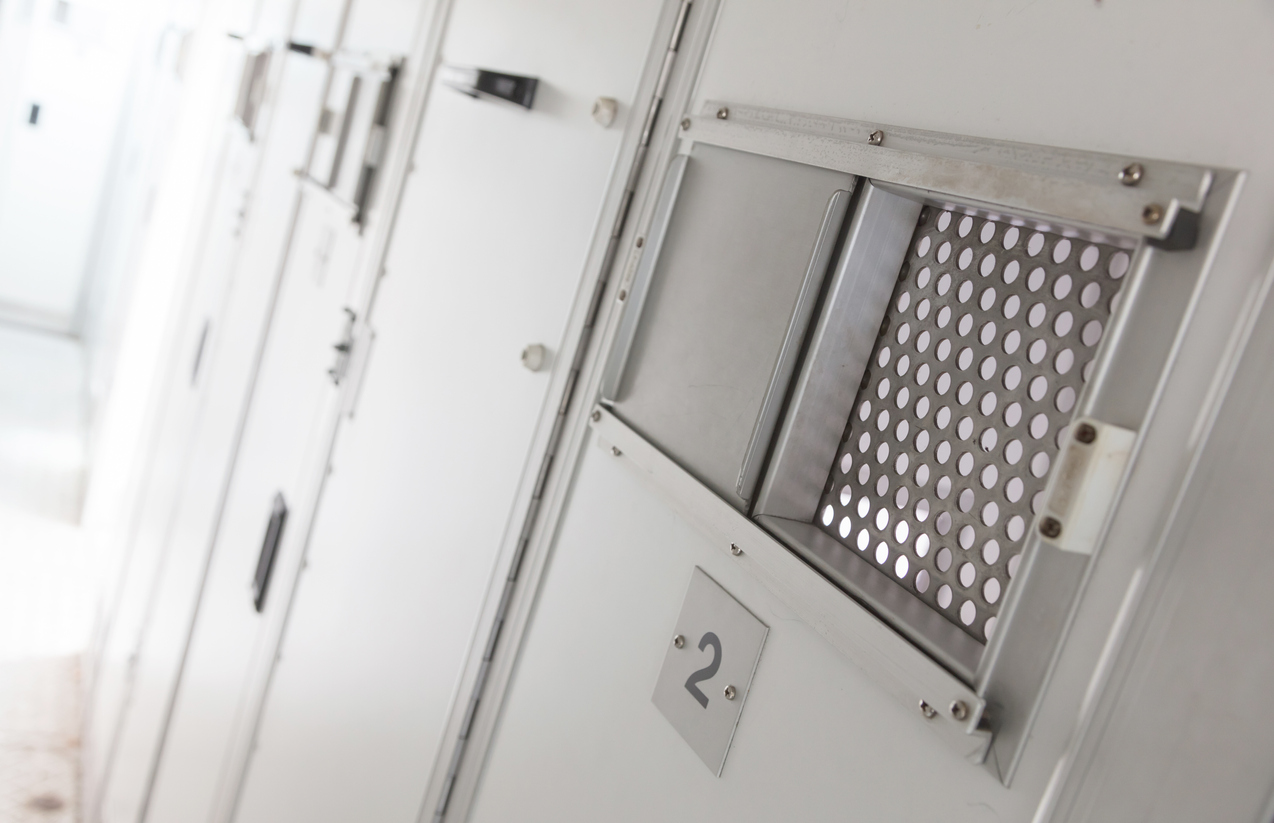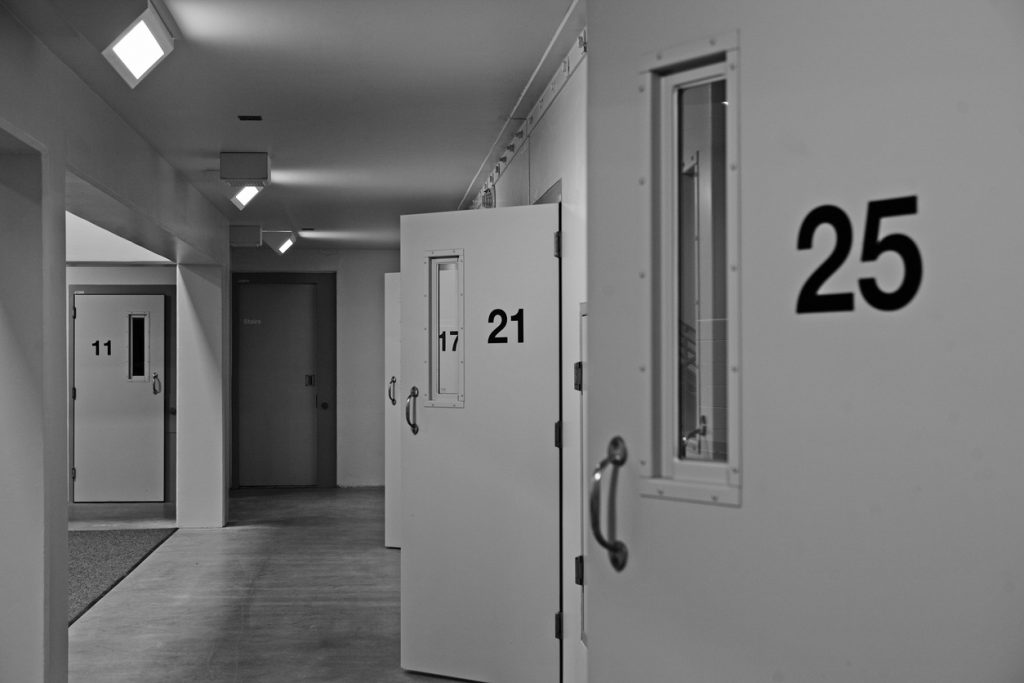
08 Jul Despite Limits, Solitary Confinement Remains a Fixture in U.S. Prisons
Solitary confinement is a measure used by prisons, jails and other detention facilities. This means incarcerated persons, juveniles or adults, are in social isolation for a period of time. But, solitary confinement’s definition does not speak to the impacts it has. People in solitary confinement are alone between 22 to 24 hours of the day, with almost no access to programs their facility provides.
Both during confinement and long after, many face both physical and psychological impacts. Advocates and research on solitary confinement have led half of states to reform solitary confinement policies in recent years. But, is limiting the use of solitary confinement enough?
Prisons across the United States are still using solitary confinement.
Solitary confinement is a measure used in prison facilities and jails. Other terms for solitary confinement include solitary, isolation, lockdown, and “SHU.” The practice is used on both incarcerated adults and juveniles. When someone is in solitary confinement, the individual is isolated from others. This person remains in solitary confinement for 22 to 24 hours of the day.
While in solitary, people have limited access to programs and activities the prison provides. The cells used for solitary confinement are usually 7 or 8 feet by 10 feet, a size comparable to an elevator.
Solitary confinement is a widely-used practice used across the United States. A Yale Law School study that looked at data from 39 states shows there were around 55,000 and 62,500 incarcerated persons in solitary confinement during 2019. Four of these states claimed to no longer use solitary confinement. The study also looked at how long individuals remained in solitary confinement. Of those studied, about 46% were in solitary confinement for three months or less. Another 11% were in solitary confinement for over three years.

Solitary confinement has serious mental and physical health consequences.
Solitary confinement has serious short and long-term impacts on mental health. One study found disproportionate rates of mental illness and self-harming behaviors among those in solitary confinement. These numbers were compared to those in general populations. The results show mild psychiatric symptoms of those in solitary confinement. It also found significant psychiatric distress in over half of the sample. The results also show that over a quarter of the population had anxiety and depression. And while nine percent of the general population engages in self-harm behaviors, that number is 20 percent for those in solitary confinement.
There are also long-term impacts on people’s mental health after solitary confinement. Some reports say that long-term impacts depend on the individual. But, one of the longest-standing impacts is on individuals’ social interactions. Readjusting to life in the prison general population can be hard after release. Further, those same social impacts are there once the individual gets out of prison.
This sort of difficulty could hinder one’s ability to stay out of prison as well. But, there are also long-term mental health impacts on the individual themselves. Some examples are sleep issues, depression, anxiety, phobias and emotional dependence.
Solitary confinement can also impact an individual’s physical health in addition to mental health. One physical impact is weight fluctuation. Weight fluctuation can lead to other weight-related health complications. Another physical impact is musculoskeletal pain. Such pain can last once someone is out of solitary confinement. The pain is a result of the small space confinement entails.
Some states already limit the use of solitary confinement.
Some states already have limits in place on the use of solitary confinement in their facilities. Recently, other states are taking steps toward reform. This year, New York governor Andrew M. Cuomo signed a bill into law that limits long-term solitary confinement. The law states that no person can be in solitary confinement for longer than 15 days. Also, the law requires new programs for those in solitary confinement longer than 15 days. Those programs include mental health screenings and checks for suicide risk.
New York’s legislation follows the path others states took years before. Colorado took a more strict approach back in 2017. Through legislation, the state banned the use of long-term solitary confinement for over 15 days. The law also demands that those in isolation get four hours a day outside of confinement to partake in certain group programs and activities.
Another state that took similar measures was New Jersey in 2019. At that time, bill A314 applied to prisons, jails and other detention facilities. The bill prohibited the use of solitary confinement for longer than 20 days in a row, or 30 days not in a row. However, it does make an exception if there is reason to believe that someone is at risk of harm to themselves or others.

Some states have banned the use of solitary confinement entirely.
Several states no longer use solitary confinement against particularly vulnerable groups such as youth, those pregnant, and those with developmental disabilities or mental illnesses. For example, Nebraska passed a law in 2019 that bans the use of solitary confinement on people belonging to these groups and others.
New Mexico also passed a law in 2019 banning solitary confinement for minors, those with mental illnesses and pregnant people. Other states that have taken similar initiatives are Georgia, Texas and Arkansas.
But, these reforms are not enough.
There was a lack of progress to change solitary confinement policies in 2020. States’ reforms do take the right steps to protect the mental and physical health of incarcerated persons. But, some say there is more work to do. For example, some criminal justice reform advocates want to abolish the use of solitary confinement. Based on mental and physical impacts, such movements have potential. One place that took a similar move was Illinois. In 2013, the state shut down one of its facilities only meant for solitary confinement.
But, despite research and reform surrounding solitary confinement, the practice is still used throughout the country. Some say there are reasons to still maintain the practice. For example, some say it can help protect incarcerated persons at risk of harm from others. Regardless, limiting solitary confinement to necessary situations does not stop criminal justice reform advocates from wanting to further limit or end the practice.

